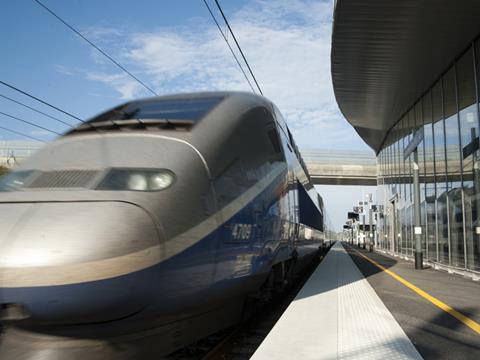
EUROPE: An economic study published on January 21 aims to help determine how best to expand the current European high speed network.
Commissioned by Alstom and SNCF from German management consultants Civity, the study formed the basis for a debate entitled ‘The Relevance of High Speed’ held at the European Parliament Salons in Brussels on the same day. Keynote speakers at the debate included Olivier Onidi, Director European Mobility Network at DG MOVE and Silvia-Adriana Ticau, Vice-President of the TRAN Committee.
Referring to the European Commission’s 2011 White Paper which envisages tripling of the present route-km of high speed lines by 2030 and completion of ‘a coherent network’ by 2050, the report notes that this would cost €300bn to €500bn at current prices and would require ‘a threefold increase in the pace of construction, which makes achievement of the plan within the envisaged timeframe rather unlikely’.
Targeting European and national policymakers, the study aims to determine the relevance of various high speed line options from a cost, revenue and socio-economic perspective. It takes into account ‘direct system costs’ and external costs, balancing these against benefits defined as ‘commercial revenues, external cost advantages and monetised user benefits from total travel time savings’. A sensitivity analysis is used to pinpoint the levers that have the greatest impact on costs and benefits, but the study also stresses that each corridor should be assessed individually.
The study defines the options as building very high speed lines for speeds of 300 km/h and more, constructing medium high speed lines for 250 to 280 km/h, and upgrading conventional lines for 200 to 220 km/h. Given that traffic in existing high speed corridors ranges from 3 million to 39 million trips a year, it seeks to cover a wide range of scenarios and emphasises the significant variations in infrastructure costs implied by the different options.
Seven corridors were chosen for further analysis:
- München – Wien – Bratislava;
- Amsterdam – Berlin – Warszawa – Kyiv;
- Bologna – Ljubljana – Salzburg – Wien;
- Tallinn – Riga – Kaunas – Warszawa;
- Sofia – Bucuresti;
- Praha – Warszawa;
- Berlin – Praha – Wien – Budapest.
Two of these, Amsterdam – Warszawa and Riga – Warszawa, are examined in more detail, concluding in both cases that construction of very high speed lines offers ‘the highest absolute benefit surplus’ calculated as total benefits less total costs, although the highest benefit:cost ratio would be the upgrading option.

















